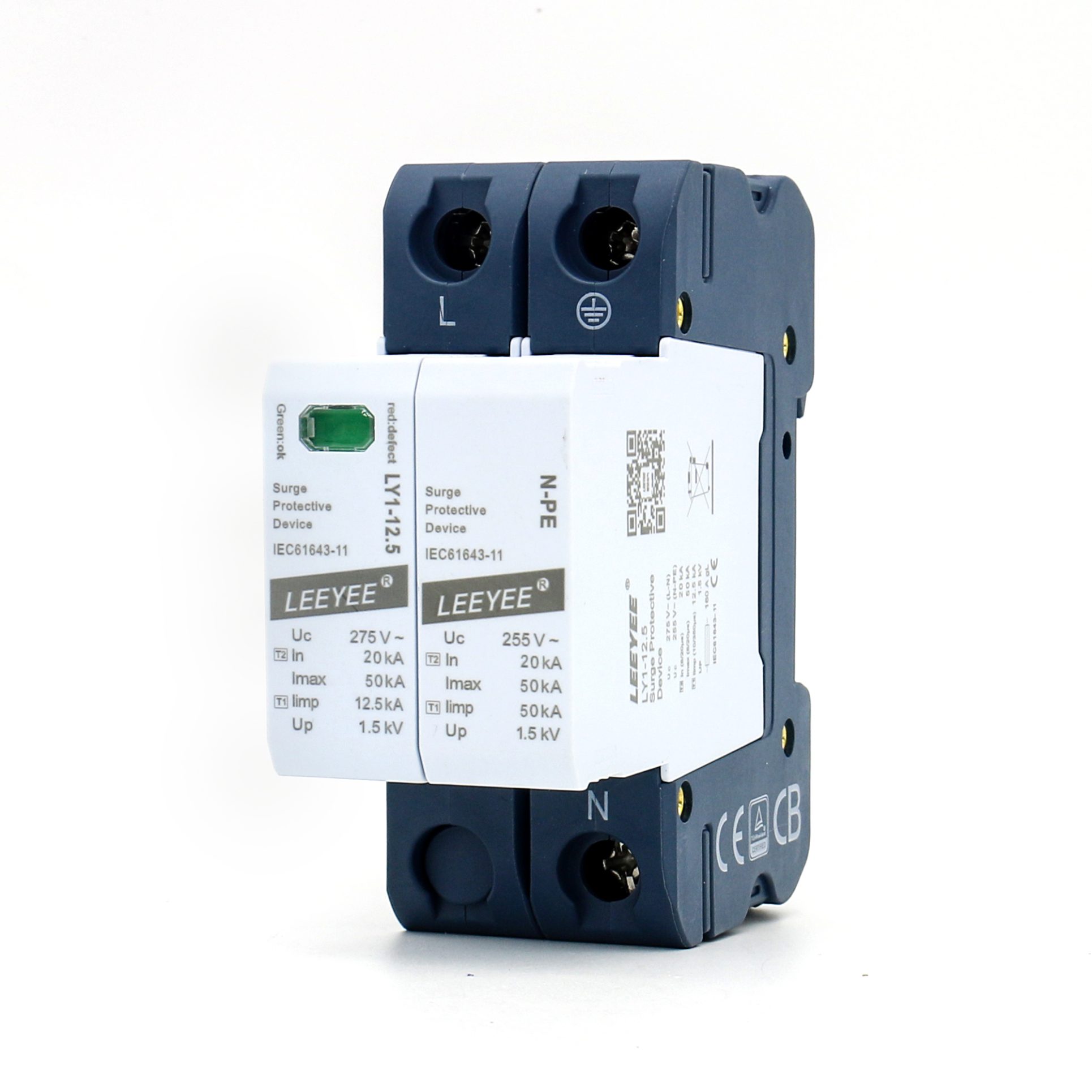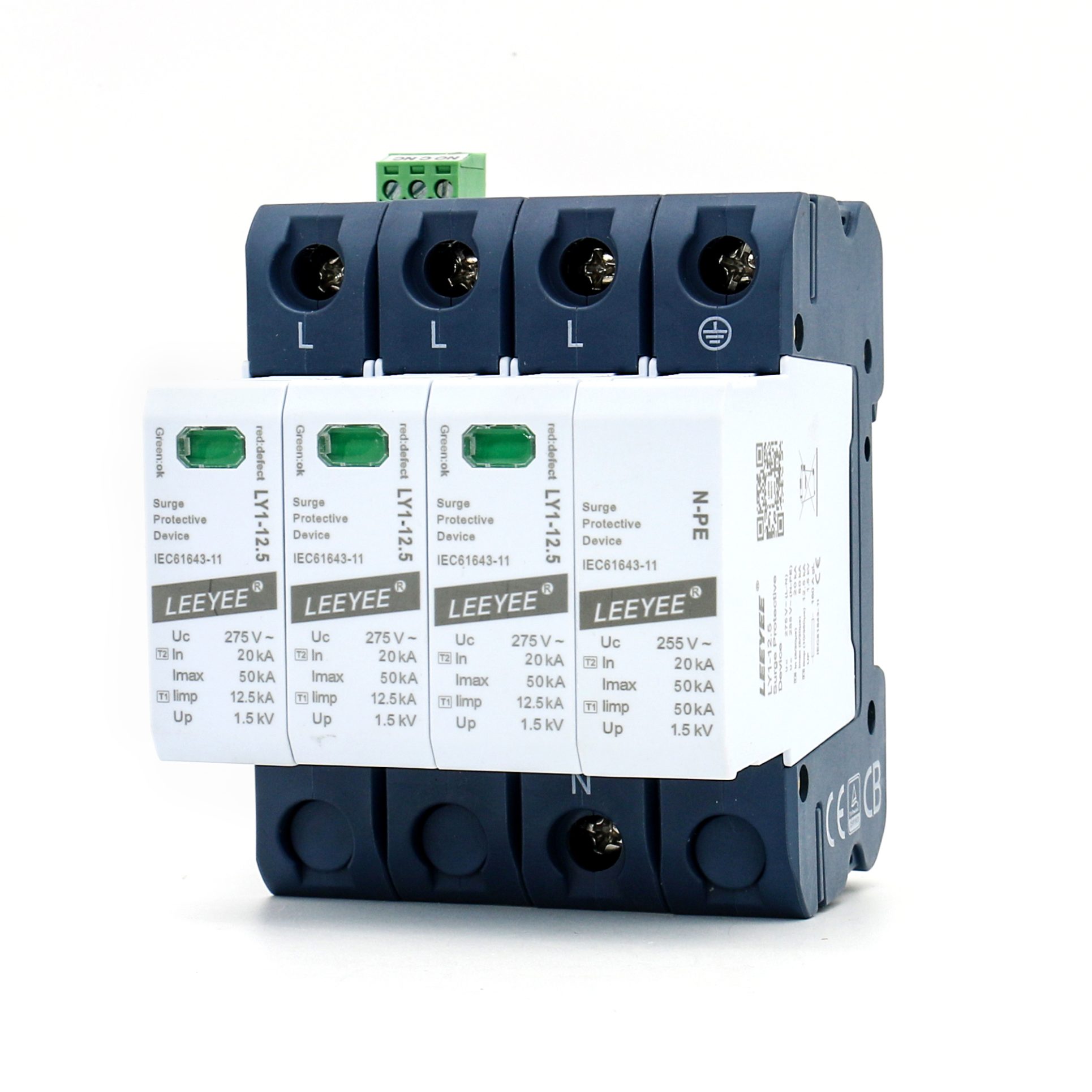In today’s digital age, almost every home and business relies on the proper functioning of electronic devices. However, the safety of these devices is often threatened by surge voltages. Surge Protection Devices (SPDs) have emerged as crucial tools for protecting equipment. This article will delve into the functions, pros and cons, selection guidelines, and application cases of surge protectors, helping you better understand and choose the right product.
Table of Contents
What is a Surge Protector?
A surge protector is a device designed to protect electrical equipment from sudden high voltage (known as surge voltage). Surge voltages can be caused by natural factors (like lightning, storms) or human factors (like equipment startup and shutdown). Such voltage fluctuations can lead to equipment damage and even electrical fires.
Sources of Surge Voltage
The generation of surge voltage primarily falls into the following categories:
- Natural Factors:
- Lightning: When lightning strikes power lines, it can induce surge voltages of up to thousands of volts.
- Storms: Strong winds and weather changes can destabilize power systems, causing momentary voltage fluctuations.
- Human Factors:
- Equipment Startup: Large devices (like motors) can create momentary currents during startup, which may impact the power system.
- Grid Switching: Voltage fluctuations can occur when utility companies perform maintenance or switching operations.
How Do Surge Protectors Work?
The main function of a surge protector is to limit excessive voltage to a safe range, thereby protecting connected equipment. Its working principle involves the following steps:
- Voltage Monitoring: SPDs continuously monitor the voltage levels on the supply line.
- Instant Reaction: When the voltage exceeds a set threshold, the SPD quickly activates its internal protective components.
- Diverting Surge Current: Through components like Metal Oxide Varistors (MOV) or Gas Discharge Tubes (GDT), the SPD diverts excess current to the ground, preventing it from reaching the devices.
Key Components
Surge protectors typically consist of the following main components:
- Metal Oxide Varistor (MOV): Quickly conducts excess voltage to the ground when a specified threshold is exceeded.
- Gas Discharge Tube (GDT): Conducts under high voltage, protecting against high-energy surges.
- Inductors and Capacitors: Used for filtering and voltage stabilization, further reducing surge impact on devices.
Advantages of Surge Protectors
1. Equipment Protection
Surge protectors effectively prevent damage from surges, with studies showing that devices equipped with SPDs experience a 60% reduction in failure rates. This translates to lower repair and replacement costs for businesses that rely heavily on electronic equipment.
2. Economic Benefits
By reducing repair and replacement costs due to equipment damage, SPDs can save businesses significant amounts over time. Decreased downtime also contributes to improved productivity. Investing in SPDs is, therefore, a smart long-term economic choice.
3. Enhanced Safety
Using surge protectors significantly reduces the risk of electrical fires. According to the National Fire Protection Association (NFPA), facilities equipped with SPDs have a 30% lower probability of electrical fires. This not only protects equipment but also ensures the safety of personnel.
Disadvantages of Surge Protectors
1. Cost
While surge protectors offer numerous benefits, their initial investment and maintenance costs are crucial considerations for users. High-quality SPDs can be expensive, potentially posing economic challenges for smaller enterprises. Users need to assess their return on investment when considering SPDs.
2. Protection Limitations
Although SPDs provide effective protection, their ability to protect against extremely high-energy surges (like direct lightning strikes) may be limited. In some cases, additional protective measures, such as advanced lightning protection systems, may be necessary.
3. Lifespan Issues
Surge protectors do degrade over time. Depending on environmental conditions, the effective lifespan of an SPD can vary. Users must invest in regular maintenance to check and replace SPDs to ensure proper operation.
How to Choose the Right Surge Protector
When selecting a surge protector, users should consider the following factors:
1. Voltage Rating
Ensure the SPD’s voltage rating matches the needs of the devices being protected. This is the most fundamental and critical consideration when choosing an SPD.
2. Application Environment
SPDs need different protective capabilities based on the operational environment. For example, industrial settings may encounter higher surge voltages, necessitating SPDs with higher protection ratings.
3. Rated Current
Select an SPD that can handle the maximum operating current of the devices to ensure it can withstand the surge currents generated during operation.
4. Certification Standards
Choose surge protectors that comply with international standards (such as UL, IEC) to ensure their performance and safety, reducing the risk of use.
Case Studies
1. Residential Applications
In homes, surge protectors primarily protect computers, televisions, and other electronic devices. Many homeowners opt to install SPDs to avoid losses from surges when using high-end electronics. By installing SPDs, users not only protect their devices but also enhance the safety of their daily lives.
2. Industrial Applications
In industrial environments, the use of surge protectors is crucial. Large machinery and control systems can generate significant current fluctuations during operation, requiring robust surge protection. Studies show that factories equipped with SPDs have noticeably lower accident rates compared to those without, further underscoring the importance of SPDs.
3. Commercial Facilities
In commercial settings, surge protectors can safeguard critical equipment such as POS systems and computer servers, ensuring business continuity. Effective surge protection can prevent financial losses due to equipment failures.
Conclusion
Surge protectors are vital tools for safeguarding electronic devices, effectively limiting surge voltages to ensure the safe and stable operation of equipment. While there are some costs and protection limitations, the economic benefits and safety they offer make them a worthwhile investment.
If you have any questions about surge protectors or want to learn more about our products, please feel free to contact us. We are here to provide expert advice and solutions to help you protect your equipment.
Contact Us
To learn more about surge protectors, please visit our website or call our customer service. We look forward to assisting you in ensuring the safety and reliability of your devices.


